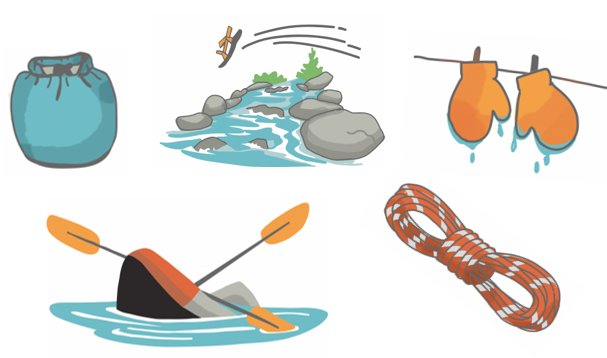
I have a tumultuous relationship with canoes. When I was eleven, my first canoe trip turned into a raging disaster when a thunderstorm upstream caused a flash flood, overturning our canoe and stranding us on a quickly shrinking island. Years later, I refused to do the canoe-tipping test required to swim at summer camp. Even into my 30s, I was the only person in my group who could not get back into a canoe after swimming in Lake Union, dumping everyone and everything out in the process (RIP iPhone 3).
I prefer my water frozen, in snow form. This preference is primarily recreation-informed - I’m a skier first and foremost - but my opinion that frozen water is superior has been continually reinforced by life experiences. Like all of the cautionary tales you’ll read in this article, of both the humorous and let’s-never-do-that-again kind, I’ve had a number of close calls with liquid water. The story I’m going to share today involves a seemingly innocent paddleboard.
A decade ago, my colleague-turned-friend Becca Polglase (the Director of Programs & Operations at The Mountaineers) set me up on a blind date with her friend Jordan. As she so eloquently put it, we were “both skiers, climbers, and borderline-obnoxious.” Hey, you can’t argue with the truth.
For our first date, Becca organized a flotilla meetup in South Lake Union. Becca and her crew headed out on paddleboards and canoes while I puttered down with my friends on a speed boat. When we got close enough, I dove into the water and began swimming toward Jordan’s paddleboard. “Swimming” being the operative word.
I am not a good swimmer. I know how to swim, but no one would call me graceful, which is why I gravitate to activities that are water adjacent. Fishing on the shore. Laying on the beach. Riding on a speedboat. Near water? Yes! In water? Not so much.
Jordan grew up on the east coast, next to a beautiful beach on the Atlantic. When he was training for a triathlon, he earned the designation Most Improved Swimmer. All his favorite activities involve water. So you can imagine Jordan’s concern when he saw me dog paddling toward him (staying afloat just fine if you ask me) and thought I was drowning.
Ever the hero, Jordan threw me his life vest for assistance. The guy had excellent aim, and hit me square in the face.
Then I was drowning.
Jordan realized his grave error and jumped into the water, helping me to his paddleboard. I reorientated myself, and we all had a good laugh. As he puts it, he didn’t expect to save my life the first time we met. I like to tell people that the first time we met, he tried to drown me.
Our second date was the aforementioned Lake Union canoe incident. Our third date was also on the water, paddleboarding in Puget Sound. When we got married six years ago, Becca was our officiant. Today, we have two young boys. They both love the water.

Always bring your keys on a car-to-car adventure
By Rheanna McLaughlin
For our first backpacking trip together, my then-boyfriend Mike and I backpacked 37 miles of the Pacific Crest Trail (PCT). The forecast called for a quarter inch of rain each day. Mike tried to give me an out, but we had only been dating a couple months and I wanted to impress him. It rained three inches that weekend. I didn’t own good rain pants, so Mike gave me his. Even still, by the fourth morning everything we owned was soaking. We hobbled into Cascade Locks at the Oregon border wearing only base layers and strategically placed garbage bags. As Mike was ringing out his wallet the last morning of the trip, I smugly proclaimed, “That’s why I left my keys and wallet in your car so they wouldn’t get destroyed!” Mike looked at me and asked me (politely) to repeat myself. It took me way too long to make the connection… We were hiking to my car. We are getting married in August, so I guess it worked out.
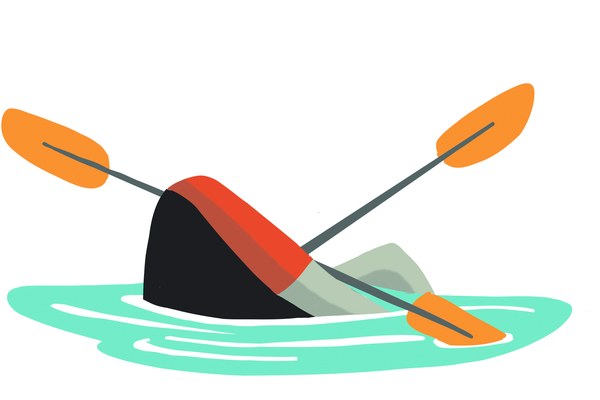
Weight limits are made to be tested
By Lace Laya
One time we hiked a giant inflatable kayak up to a mountain lake, attempting to kayak with three adults in a three-man kayak. The math was perfect. We left our dogs at camp until Trooper’s barking and Tokul’s crying became so insistent that we turned around and put both dogs in the kayak too. Unsurprisingly, we popped the bottom of the kayak with our excessive weight, forcing us to paddle as a giant cuddle puddle back to shore. I think our laughter was louder than the dog’s barking! It was happy and ridiculous.
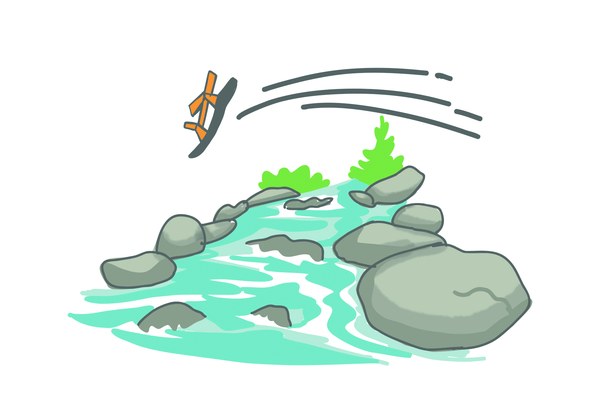
Guidebooks exist for a reason
By Mark Langley
A long time ago, I was on a backpacking trip in the Wind River, WY, in early July. One cold morning, we attempted a wide river crossing with one pair of sandals between us and no hiking poles. The moving water was more than knee deep and we were wearing big packs. Using sticks for balance, we stripped below the waist to stay dry and attempted the crossing one at a time. We threw the sandals back and forth across the river so that we could both use them (it took a serious throw to make it). The crossing ended in the shade, and the wet end of our walking sticks froze in the time it took us to dry off. That day was the coldest I have ever felt. When we re-read the guidebook later, we realized we missed the part that said, "The Wind River is too cold, too fast, and too deep to ford safely in early July."
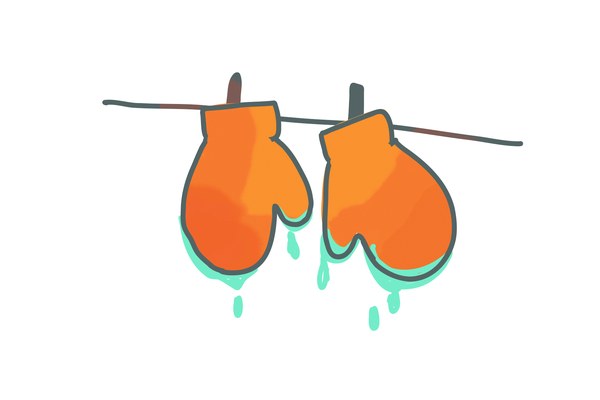
Only trespass if it comes with a cocktail
By Courtney Francis
During COVID, we floated the Methow River with our kids on inflatable kayaks. We misjudged where to pull out and ended up climbing the bluff hauling the kayaks, trespassing on someone’s private property. The owner came out of his house - we were completely embarrassed and worried he would be upset at our intrusion - but he ended up being a retired psychotherapist who gave my husband a cocktail and my boys ginger beers while I took a cab to retrieve our car. Our conversation with him was the highlight of our Mazama trip that summer.
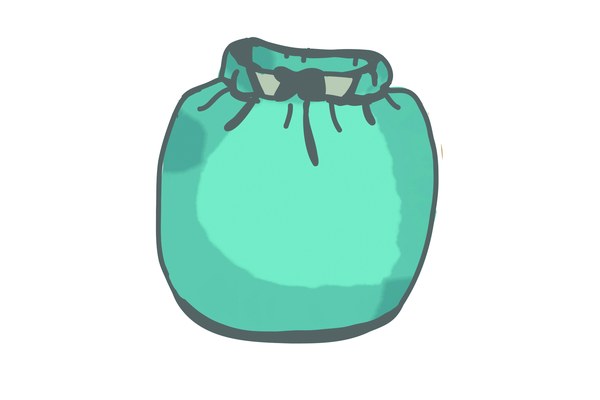
Dry bags are meant to keep water out
By David Haggith
When I was in the Boy Scouts, one of the dads presented the importance of keeping your clothes and sleeping bag dry when packing in preparation for our upcoming backpacking trip. He educated the group on drybags and how to use them, and concluded the presentation by giving us all dry bags. A week later we embarked on our four-day trip. From the get-go, Joe, a fellow Boy Scout, was complaining about how heavy his backpack was. We all thought he was being dramatic and encouraged him to trudge on. After a full day of hiking, we got to the campground and started to unload bags and pitch tents. Joe pulled out his dry bag and inside - along with his clothes and sleeping bag - was a gallon-sized plastic milk container he had repurposed as an oversized water bottle, the entirety of which had spilled into his dry bag. The bag looked like what you'd receive when buying fish at a petstore: bulging and heavy. Joe opened it, pouring out all his soaked clothes and sleeping bag. Thank goodness the scoutmaster packed extras of everything. Joe didn't go cold, but he did learn to never pack water inside a dry bag again... or so we hope.
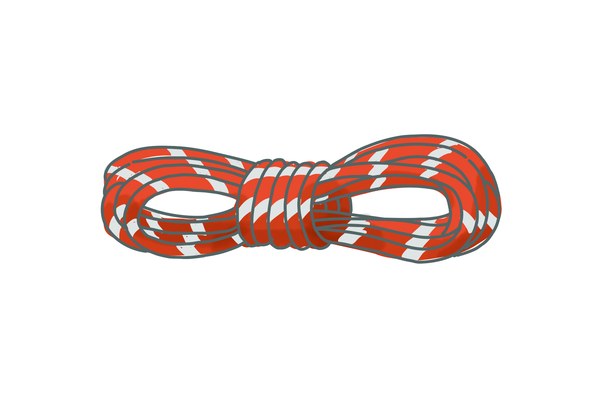
If you're at the end of your rope, don't drop it in a cave
By Daryl Greaser
As a caver, I spend a lot of time in dark, damp, tight spaces. I love exploring new boundaries, so a few years ago I set out with my wife and friend to attempt the first “through trip” of an alpine cave. A connection passage was known to exist, but no one had ever done it. We reached the crux eight hours into our attempt: a body-width crack with a deep pool occupying all but the top few feet. Our plan was to stem horizontally above the water – with arms and legs out in a superman position – until we reached the other side. The others went first, crossing without difficulty. I went last, carrying our escape rope in a dry bag clipped to my harness. I thrashed through the crack, dragging the rope bag through the water behind me. Safely on the other side, I realized to my horror that we no longer had the rope – 100 feet of static line needed to exit the cliffside entrance safely. Despite the icy, 34-degree pool, I stemmed back over and dragged my leg through the water in hopes of hooking the rope bag. But it was gone, sunk in the now-turbid water. We faced borderline Type 3 fun getting out, but we lived. The rope remains at the bottom of the deep pool, unretrievable.
This article originally appeared in our summer 2024 issue of Mountaineer magazine. To view the original article in magazine form and read more stories from our publication, visit our magazine archive.
 Kristina Ciari Tursi
Kristina Ciari Tursi